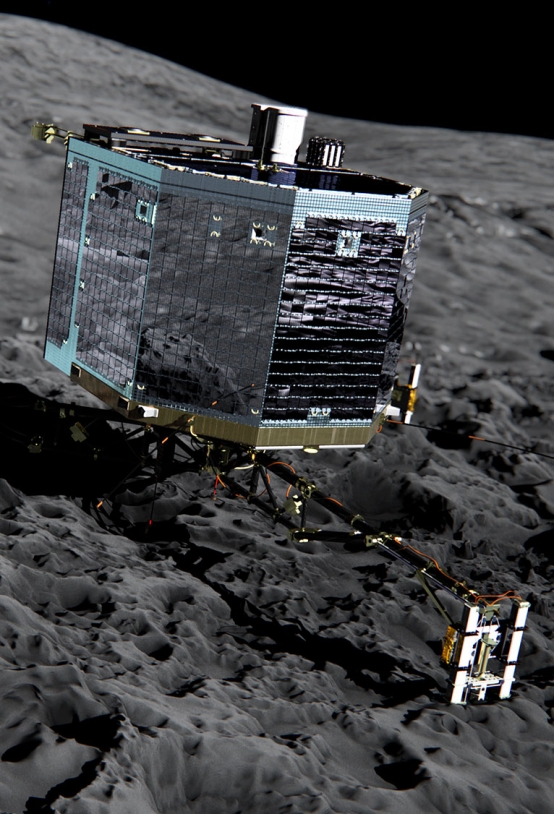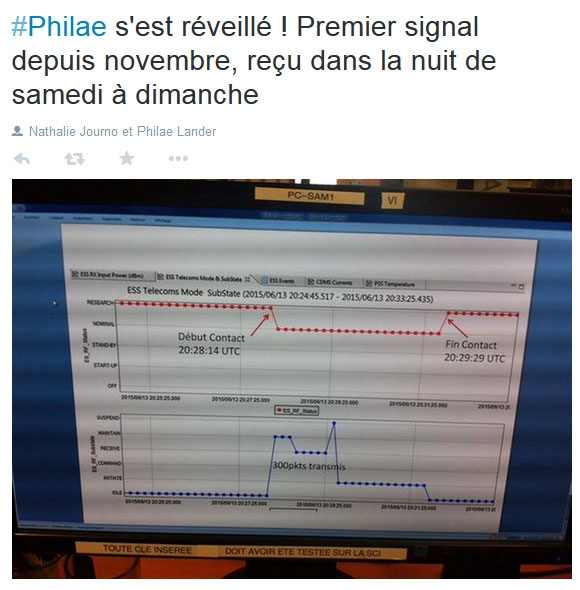Teams working to restore communications between the Rosetta orbiter and Philae have succeeded on their fourth attempt! On 28 May, Cédric Delmas, Operations Manager at the Science Operations and Navigation Centre (SONC) in Toulouse, had indicated that more favourable conditions on the comet now made it more likely that contact could be regained with the lander. To the huge satisfaction of the mission teams, the first signal from Philae since it went into hibernation on Saturday 15 November 2014 at 01:15 CET was received at the European Space Operations Centre (ESOC) in Darmstadt, Germany, on Saturday 13 June at 22:28 CET.
For Philae to be able to send a signal its internal temperature needed to warm to above –45°C and its solar panels had to be capable of delivering at least 19 W. Stephan Ulamec confirms that “Philae has an operating temperature of –35ºC and has 24 Watts available. The lander is ready for operations.”
This first signal from Philae lasted for 85 seconds or so and more than 300 data packets have been retrieved and analysed by the team at the Lander Control Centre (LCC). Although the contact window with the lander was very short, for Philippe Gaudon, Philae project leader at CNES,
It’s an important first step to know that Philae isn’t irreparably damaged or covered in dust. We must now progressively adjust the orbiter’s trajectory around the nucleus to establish better and longer communications.
There are still more than 8,000 data packets in Philae’s mass memory, but mission scientists will have to wait for the next communications slot to retrieve them. Data in the 300 packets received so far show that the lander had been awake on the surface of comet 67P/Churyumov-Gerasimenko for several days at least, even if it had not previously been able to make contact with Rosetta.
Philae awoke from its slumber only days after a team of research scientists at the LAM astrophysics laboratory in Marseille and the SONC announced that they believe they have located the lander’s position on the comet’s surface. At the time, Philae and 67P/Churyumov-Gerasimenko’s nucleus were some 215 million km from the Sun and a little over 305 million km from Earth.
Rosetta is an ESA mission with contributions from its member states and NASA. Rosetta's Philae lander is provided by a consortium led by DLR, the German Aerospace Centre, the Max Planck Institute for Solar System Research (MPS), CNES and ASI, the Italian space agency. Rosetta is the first mission in history to orbit a comet, escort it on its course around the Sun and deploy a lander on its surface.

